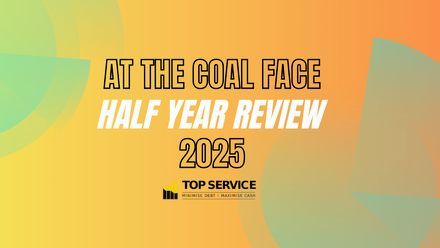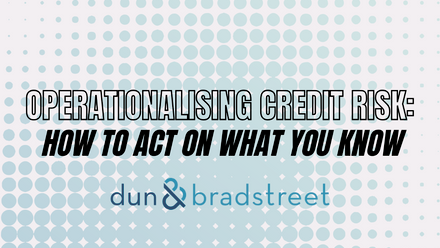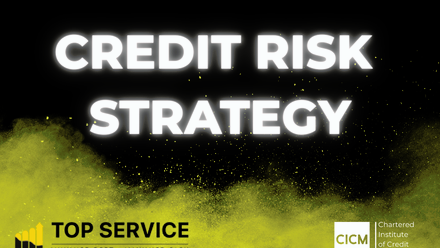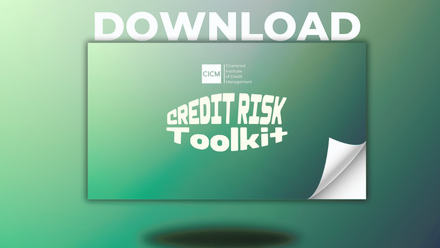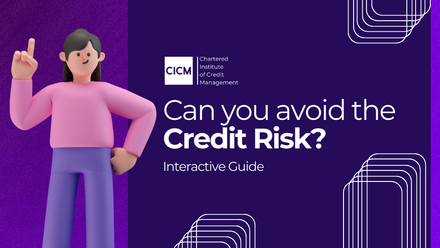Understanding Credit Risk
If your organisation offers any kind of credit, it needs to have a robust and effective strategy in place to manage credit risk. And we’d advocate the sooner the better because then we can start to feel the benefits: does having more predictable cash flow, improved financial stability, improved customer outcomes and reduced losses to bad debts sound good? Then let's get right into it.
First, let’s strip things back to basics and delve into some of the fundamentals of this important topic.
We’ll be looking at:
- What is credit risk?
- Why does Credit Risk Matter?
- How can you reduce Credit Risk?
- Credit Risk in B2C vs. B2B?
What is Credit Risk?
As businesses, we extend credit to our customers to encourage sales . This means we must accept the inherent risk that our customers could fail to meet their obligation to repay in full and on time. Put simply, credit risk refers to how we assess, control and reduce the likelihood of non-payment events.
Why does Credit Risk Matter?
Credit risk serves as the foundation upon which robust credit management and debt collection processes are built. It is a significant factor that underpins the financial stability and sustainability of your business, for better or worse, but remains a difficult area to get right. Challenges include the quality and availability of data, potential for fraud, shifting economic conditions and subjectivity in decision-making.
It is important to persevere though because if credit risk isn’t properly managed then significant financial loss is likely to follow. In addition to your customer risk portfolio, attention should be given to the risk profile of your own business because a poor profile can limit access to financing, hindering your operational flexibility and growth potential and harming your reputation.
How can you reduce Credit Risk?
Mitigating credit risk requires a proactive approach. Here are some key strategies:
- Understand your organisation’s risk appetite and operate within its parameters, using cohort analysis to assess its effectiveness. Working in line with the risk-reward ratio and monitoring its performance allows you to set and adjust valid strategies and clear parameters for your processes.
- Implement robust credit assessment procedures to evaluate the financial health and repayment capacity of potential customers. In consumer terms this is known as creditworthiness and affordability. It may involve analysing factors like credit history reports, financial statements, geo-demographic behaviours, and industry trends. Having a detailed credit application form, ideally available online, is a good place to start building a picture of your potential customers.
- Decide whether the customer meets the acceptable risk threshold, which should be defined in your Credit Policy. This decision will be based on your assessment of the customer’s character and capacity to pay, as well as the effect on your cash flow should they default.
- Diversify your customer base and avoid overexposure to a single customer or industry sector. This helps spread the risk and minimizes potential losses in case of defaults.
- Establish clear and well-defined payment terms, including risk thresholds, credit values and limits, interest rates, late payment penalties and any required securities. The options available and the conditions for their use should be clearly outlined in your Credit Policy.
- Continually monitor the credit risk of your existing customers and be prepared to respond appropriately. Regular reviews include confirming payment terms are being met, checking for adverse information and actively seeking vulnerabilities. Updated reports from credit agencies can assist and these can be automated to reduce manual effort. When the risk increases mid-term options include immediate customer contact and reducing the credit limit and / or payment terms. For consumer customers it involves the application of forbearance and due consideration. Regular reviews can reveal improvements and highlight customers that might benefit from an increased line of credit or an adjustment of credit restrictions .
- Consider securities such as credit insurance as a risk mitigation tool. It can offer financial protection against losses incurred due to customer defaults.
Credit Risk in B2C vs. B2B
Although losses to late payments and bad debts have the same effect of eroding profit in both B2C (business to consumer) and B2B (business to business) environments, the process of making the assessment of credit risk differs:
- B2C: Individual creditworthiness is usually assessed via a scorecard system which plays a significant role in assessing creditworthiness and affordability within the parameters of the FCA’s regulations.
- B2B: Scorecards are not typically used and as a result acceptance decisions are more subjective. Business financials, industry dynamics, and economic conditions are crucial factors in evaluating credit risk on larger transactions and longer credit terms.
Extending credit to your customers brings many benefits but also carries with it the risk that you won’t receive payment as expected, which can have significantly detrimental effects. Implementing best practices around credit risk management will help you manage and mitigate those risks, allowing your business to gain the stability and growth opportunities that exist.
Learn more than just the basics
This blog outlines the fundamentals of credit risk, but you may be reading in the hopes that you can extend your knowledge with some more depth.
If you’d like to learn more, you can register your interest in any upcoming virtual workshops. Specifically, you may want to check out our Best Practice skills to assess Credit Risk virtual workshop which is a two-hour session run by knowledgeable and experienced subject matter experts.

